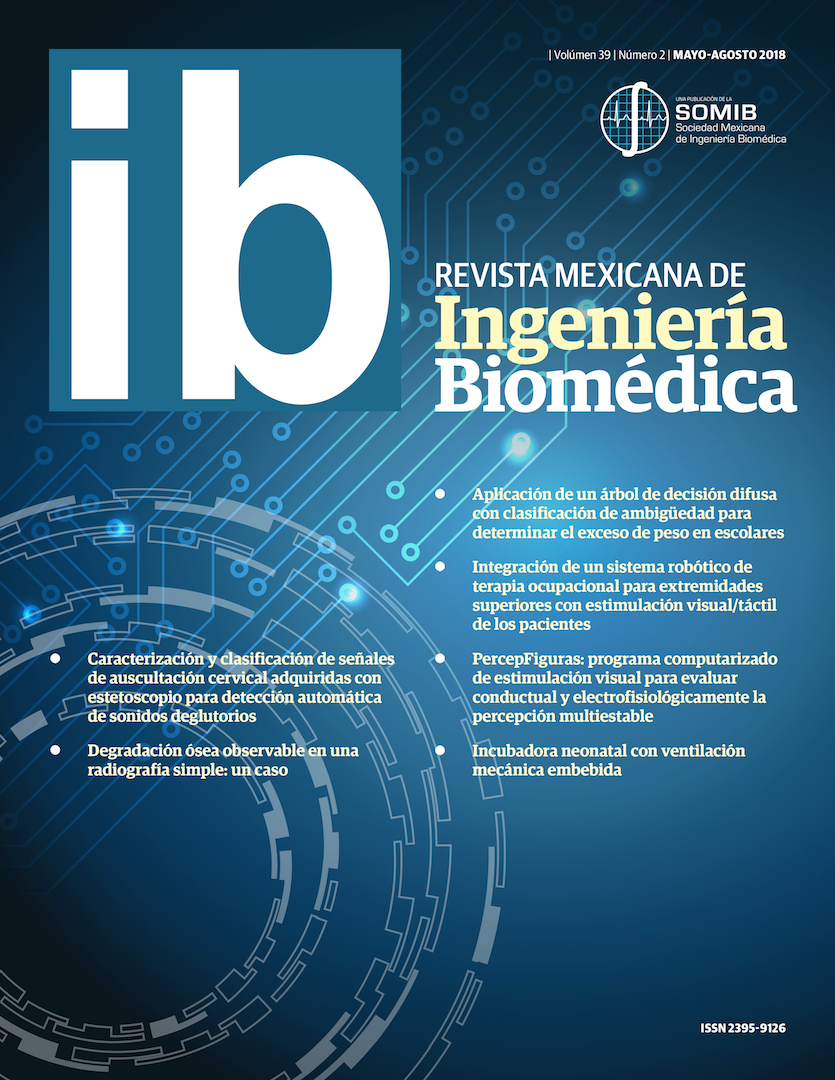Integration of an Occupational-Therapy Robotic System for Upper Limbs withVisual/tactile Stimulation of Patients
DOI:
https://doi.org/10.17488/RMIB.39.2.2Keywords:
haptic device, augmented reality, rehabilitation therapiesAbstract
Traditional upper limb rehabilitation exercises are primarily aimed at regaining the strength or range of motion of the patients' injured area. An alternative option that has been presented in the last years is the use of haptic inter-faces, which have shown their potential as tools that support rehabilitation therapies. This article presents a haptic system of rehabilitation for fine upper limb movements, whose main characteristic is that users of the system can interact in a visual and tactile fashion with virtual objects mixed with real scenarios, thereby achieving an augmen-ted reality environment. The system was tested in two stages, both with subjects who had a degree of disability in upper limbs. The data collected were followed trajectories, follow-up errors and the muscular activity obtained by means of electromyography; the collected information enabled the analysis, in a quantitative way, of the degree of progress of the patients. In addition, the assessments made by physiotherapists were considered, concluding that the proposed system can be used as a viable complementary tool for conventional rehabilitation therapies.
Downloads
Downloads
Published
How to Cite
Issue
Section
License

This work is licensed under a Creative Commons Attribution-NonCommercial 4.0 International License.
Upon acceptance of an article in the RMIB, corresponding authors will be asked to fulfill and sign the copyright and the journal publishing agreement, which will allow the RMIB authorization to publish this document in any media without limitations and without any cost. Authors may reuse parts of the paper in other documents and reproduce part or all of it for their personal use as long as a bibliographic reference is made to the RMIB. However written permission of the Publisher is required for resale or distribution outside the corresponding author institution and for all other derivative works, including compilations and translations.








